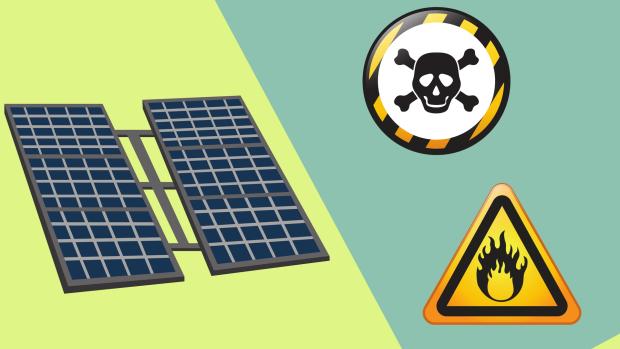
Illustration : Purabi Deshpande / Research Matters
Scientists believe that inorganic semiconductors used in making solar cells may have hit the efficiency ceiling besides being environment hazard.
In my opinion, silicon technology has reached a sort of limit regarding efficiency. It is around 20% efficient right now, but it hasn't seen a huge leap in efficiency in a long time. Production of electronic grade silicon pollutes the environment significantly and manufacturing silicon wafers indigenously on a large scale is still a challenge," says Prof. Sandeep Kumar, of the Raman Research Institute (RRI), Bangalore, who specializes in Soft Condensed Matter.
Going ‘organic' is the alternative, says Prof. Kumar, who along with his team of researchers, is studying the use of organic materials like polymers or carbon fullerenes in solar cells. "Organic photovoltaic (OPV) research has received a good momentum in the past decade as promising sources of alternative energy due to their low cost, ease of fabrication, roll-to-roll processing, flexibility, and lightweight, he says.
Traditionally, inorganic semiconductors like silicon and its alloys have been used in making solar cells due to their appropriate electrical properties and wide availability. In addition to being an environmental hazard, some scientists believe that silicon-based solar cells may have also hit the efficiency ceiling. The power conversion efficiency (PCE) of OPV's has crossed the 10% mark and is increasing day by day", he explains.
In a recently published study, Prof. Kumar of the Raman Research Institute in collaboration with researchers at the Center of Material Sciences, University of Allahabad, and National Physical Laboratory, New Delhi, have used indigenously developed Discotic Liquid Crystals (DLC) to build effective organic solar cells that could become an eco-friendly alternative to conventional solar cells. This study was funded by the Department of Electronics and Information Technology (DEITY) and published in the Liquid Crystals Journal.
"DLCs were discovered at the Raman Research Institute in 1977. They are of fundamental importance not only as models for the study of energy and charge migration in self-organized systems but also as functional materials for device applications such as one-dimensional conductors, photoconductors, light emitting diodes, photovoltaic solar cells, field-effect transistors and gas sensors", remarks Prof. Kumar.
DLCs are made of stacks of disc-like molecules in a state of matter that lies between those of a liquid and a solid crystal, like powdered sugar, which is made of solid crystals, but collectively behaves like a liquid taking the shape of the vessel in which it is stored. Earlier studies have shown that DLCs efficiently conduct electricity along their length with very little loss, effectively making them molecular wires. In this study, the researchers have used DLCs in solar cells to increase their efficiency.
The world is witnessing a shift in its primary energy sources, with fossil fuels giving way to renewable sources like solar and wind. India is well along this line of transformation with 10GW of electricity currently produced from solar energy, compared to just 2.6 GW in 2014. This shift to solar energy across the world has revived the solar cell (also known as the photovoltaic cell) industries, and now increased investments pour into this sector.
A solar cell, in principle, converts the energy of light falling on it, into electricity. The light conversion in OPV cells is based on charge generation at the interface between two different organic semiconductors, followed by their separation and migration toward opposite electrodes. The researchers of the study sandwiched a layer of DLC between an active layer (PCDTBT and PCBM) and a molybdenum trioxide buffer layer.
"We have explored the use of DLC as an additive in classical organic photovoltaic cells and observed significant improvement in conversion efficiency from 1.24% to 5.14%. The enhancement is attributed to the better charge mobility in the ordered system due to the presence of columnar phase of the DLC", exclaims Prof. Kumar.
Although solar is hailed as a ‘green' energy source, the mining and the manufacturing process associated with silicon based solar cells releases large amounts of pollutants, overshadowing the eco-friendly status of solar power. Organic solar cells, on the other hand, overcome these shortcomings and with studies like this, they may soon surpass the efficiency of silicon-based cells, finally providing us a true ‘green' source of power.






